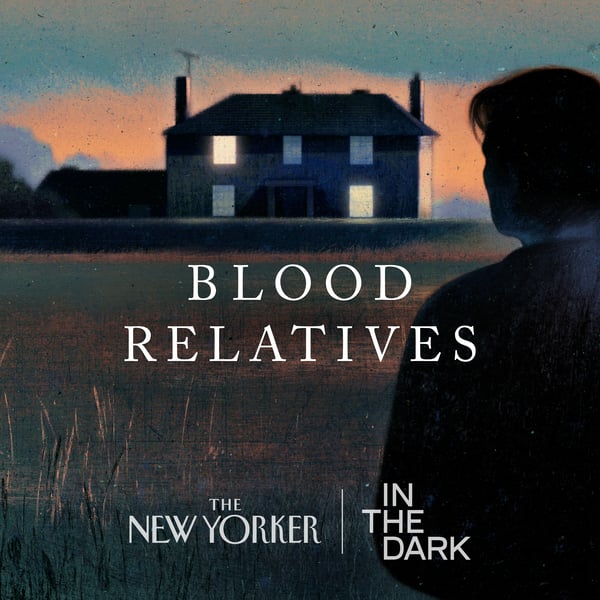From The New Yorker Radio Hour: Rachel Aviv on Alice Munro’s Family Secrets
In The Dark
The New Yorker
4.7 • 28.4K Ratings
🗓️ 11 March 2025
⏱️ 33 minutes
🧾️ Download transcript
Summary
Alice Munro, a winner of the Nobel Prize in Literature, was perhaps the most acclaimed short-story writer of our time. After her death, last year, her youngest daughter, Andrea Skinner, revealed that Munro’s partner, Gerald Fremlin, had sexually abused her starting when she was nine years old. The abuse was known in the family, but, even after Fremlin was convicted, Munro stood by him, at the expense of her relationship with her daughter.
In this episode, the New Yorker staff writer Rachel Aviv joins the magazine’s editor, David Remnick, to talk about how and why a writer known for such astonishing powers of empathy could betray her own child, and how Munro touched on this family trauma in fiction. “Her writing makes you think about art at what expense,” Aviv tells Remnick. “That’s probably a question that is relevant for many artists, but Alice Munro makes it visible on the page. It felt so literal—like trading your daughter for art.”
Follow The New Yorker Radio Hour wherever you get your podcasts.
Transcript
Click on a timestamp to play from that location
| 0:00.0 | Hi in the Dark listeners, it's Madeline. Our team is hard at work at a new story, but in the meantime, I thought you'd be interested in hearing this episode from the New Yorker Radio Hour. It's an interview with one of my favorite writers at The New Yorker, Rachel Aviv, talking with New Yorker editor David Remnick about her latest astounding story. It's about the writer Alice Monroe. |
| 0:22.2 | Alice Monroe is one of the most acclaimed short story writers of our time. She won the Nobel |
| 0:26.7 | Prize in literature. The New Yorker published more than 50 of her stories. But after Monroe died, |
| 0:32.6 | her daughter Andrea Skinner came forward with a shocking revelation. Andrea revealed that she had been sexually abused as a child by her mother's husband. |
| 0:42.2 | And she revealed that her mother, the famed writer Alice Monroe, upon learning of the abuse, |
| 0:47.9 | chose to remain with her husband. |
| 0:50.3 | In this episode of The New Yorker Radio Hour, Rachel Levive takes us through her reporting, |
| 0:56.1 | including her reexamination of several of Monroe's short stories, stories that now appear to have been fictionalizing the secret story of her own family. |
| 1:05.7 | Keep listening for the full episode, and be sure to follow the New Yorker Radio Hour wherever you get your podcasts. |
| 1:14.6 | Welcome to The New Yorker Radio Hour. I'm David Remnick. Alice Monroe was a master of the short |
| 1:20.1 | story in our time, the check-off of her era. She published more than 50 stories in The New Yorker, |
| 1:25.9 | and then in 2013, she won the Nobel Prize in |
| 1:28.7 | literature. But shortly before her death, her legacy darkened when her youngest daughter, Andrea, |
| 1:35.2 | revealed that she'd been sexually abused by Monroe's longtime partner. This began when Andrea |
| 1:40.6 | it was just nine years old, and it was kept secret in the family, even after the man |
| 1:45.8 | confessed to it in letters. And Sineau Monroe's ardent readers, and there are great many of us, |
| 1:51.8 | are left with this terrible conundrum that a writer of such astonishing powers of empathy could betray |
| 1:57.9 | her own child. In one of the most astonishing pieces of reporting that the magazine |
| 2:02.8 | has had the honor of publishing in recent years, Rachel LeVeeve explores the story of Alice |
| 2:08.8 | Monroe and her art and the terrible secret of her life and the lives of her family. I thought we should begin by talking about Alice Monroe as a writer. |
| 2:21.5 | She published 50 short stories at the New Yorker at least, |
| 2:25.8 | and there were people around the office for years who considered her in many ways, |
... |
Please login to see the full transcript.
Disclaimer: The podcast and artwork embedded on this page are from The New Yorker, and are the property of its owner and not affiliated with or endorsed by Tapesearch.
Generated transcripts are the property of The New Yorker and are distributed freely under the Fair Use doctrine. Transcripts generated by Tapesearch are not guaranteed to be accurate.
Copyright © Tapesearch 2025.

